Fruit trees are lovely additions to any yard or garden. There is no better time to start than now if you are craving fruit you have produced yourself. But, to grow, we must first know the importance of pollination for fruit trees. We've researched this topic and found many answers to share.
For fruit trees to produce well, pollination is necessary. Flying insects like honeybees, bumblebees, flies, beetles, and wasps carry out this activity.
Also, many fruit trees have self-incompatible flowers, which means they require another cultivar of the same fruit that blooms while growing nearby to pollinate their flowers.
Different fruit trees have different pollination needs. Keep reading to learn about the market to pollinate your fruit tree, how pollination works, and what happens if there is no pollinator.
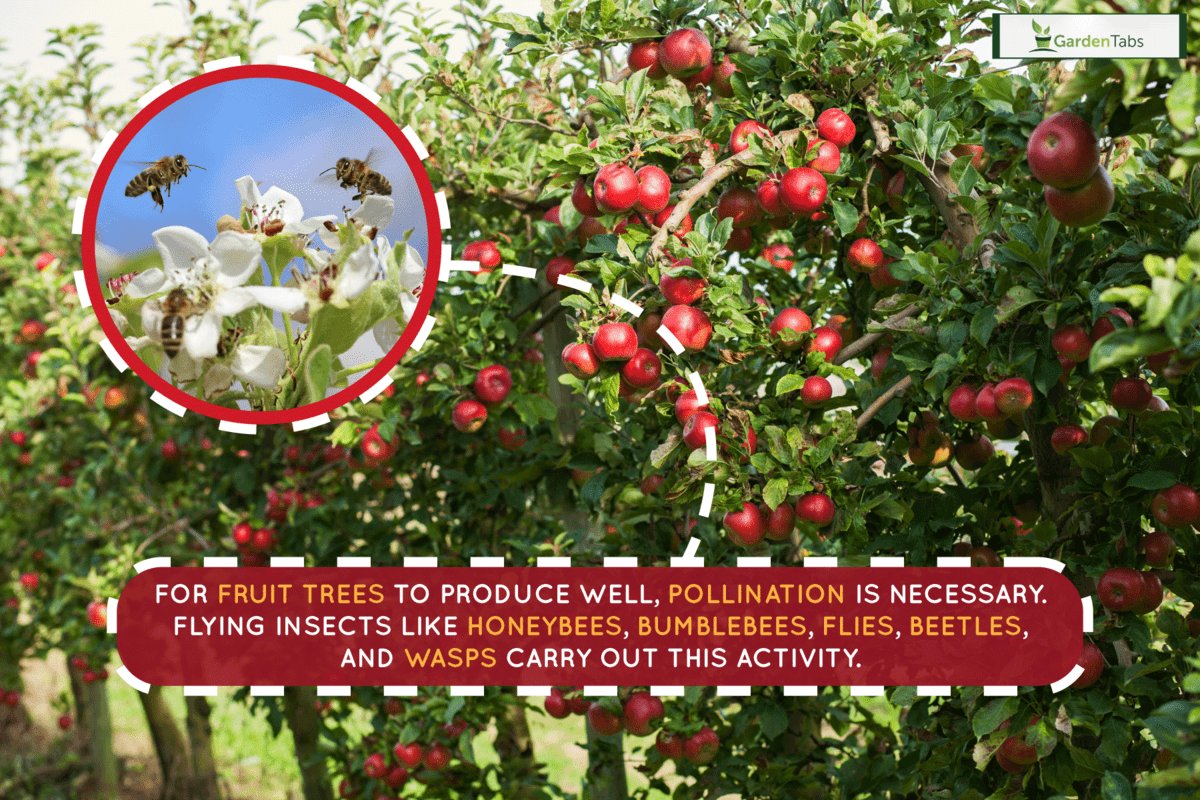
Pollinator For Fruit Trees
Pollination is the key to growing fruitful fruit trees, so you must consider it before you plant.
Different fruit trees have different pollination needs. Some fruit trees have their pollinators. Most fruit trees require pollen from another tree of the same species but a further variation, while others are pollinated typically by flying insects.
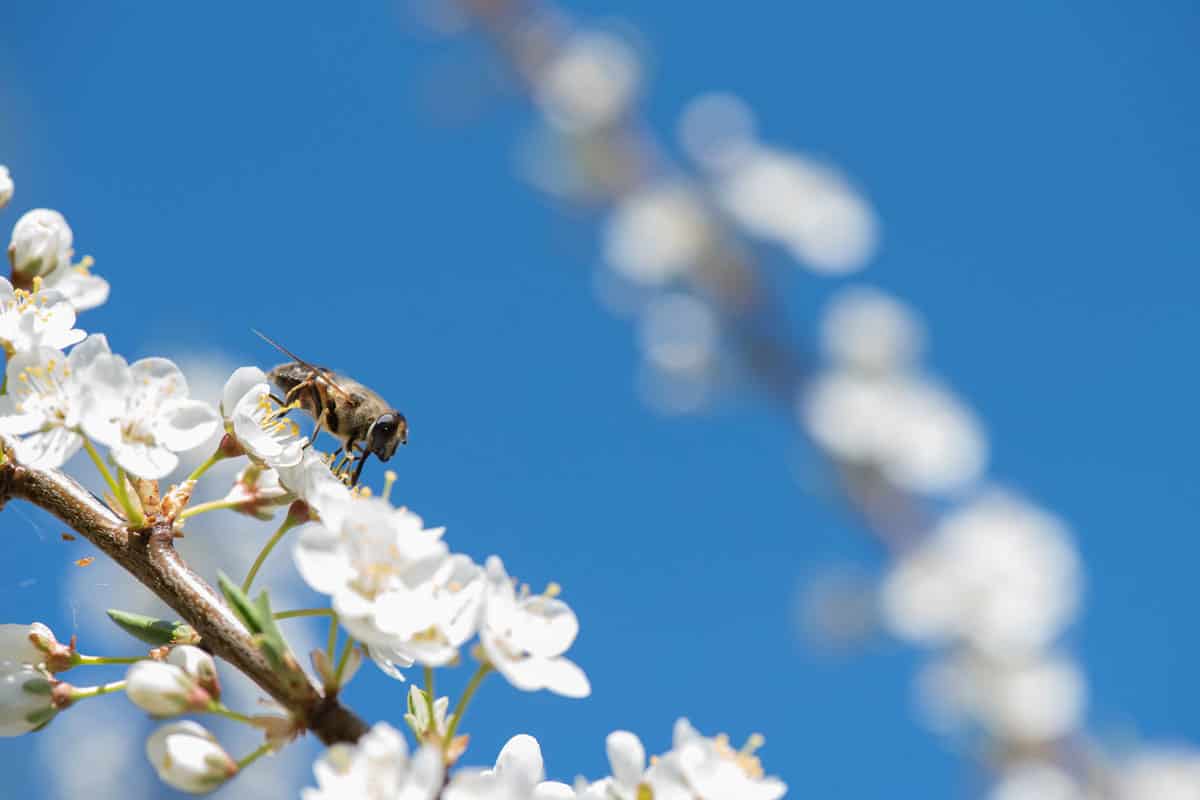
Trees that need another species of tree to pollinate require a pollinator. Despite having gorgeous blossoms, many different fruit trees cannot bear fruit when pollinated by themselves.
For pollination, they require another tree, not just one of the same fruit, but one of a distinct variety. A pollenizer is a plant that fertilizes a self-sterile or self-unfruitful plant.
A fruit tree that needs a pollinator requires one close by when planting for pollination. It is crucial to space the trees at least 15 to 20 feet apart when planting two or more trees because this promotes the best possible pollination.
The recommended maximum distance is 100 feet, although the closer, the better.
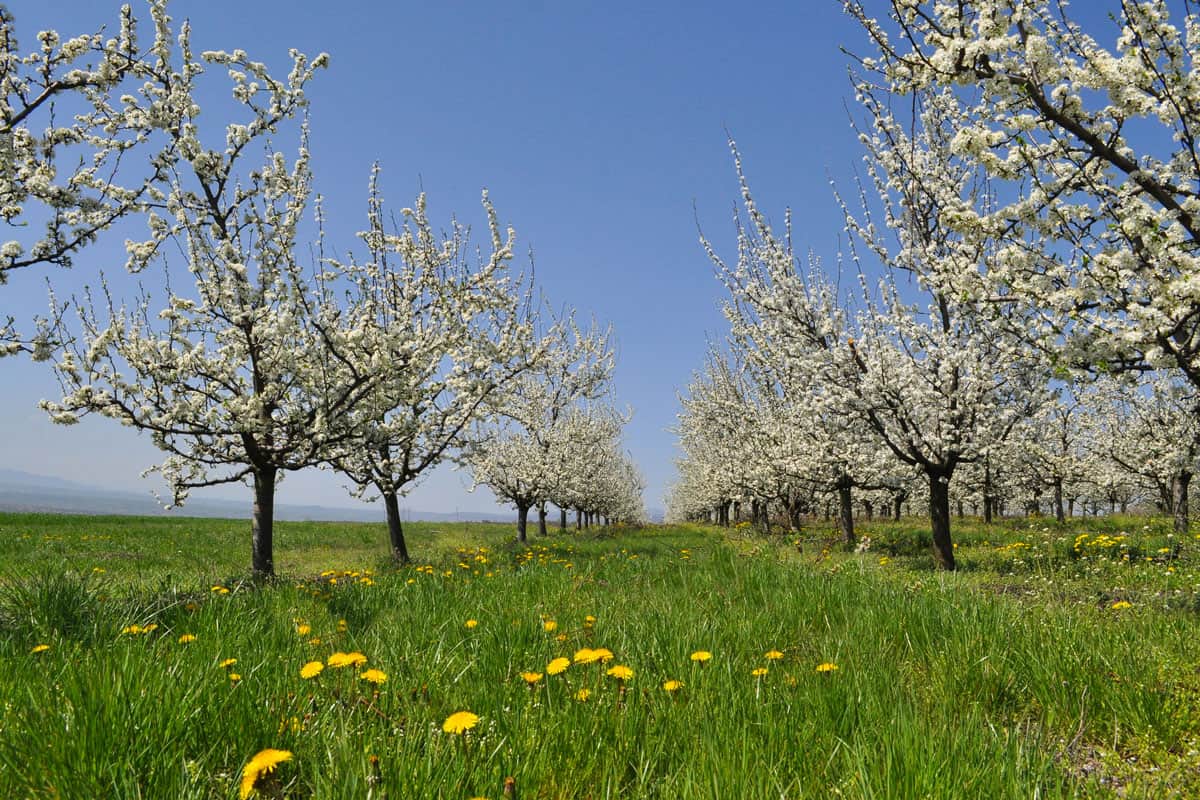
If trees are farther apart, pollinator bees are less likely to fly back and forth. Most apple, plum, sweet cherry, and pear trees also cross-pollinate or produce no fruit on their own. Also, pollination must occur during the peak of blossoming for fruit to grow.
Click here to see these native apple tree seeds on Amazon.
Experts advise setting up a pollinating system for fruit tree pollination to produce the best outcomes. Even though the trees are considered suitable, other elements can obstruct pollination.
Some trees are self-fertile or able to pollinate themselves and produce fruit without the aid of bees. Apricot, peach, nectarine, and sour cherry cultivars are almost universally self-pollinating.
It's also a good idea to have knowledge of the possibility of cross-pollination, as some trees may benefit from it even though they self-pollinate.
How Does Pollination Work?
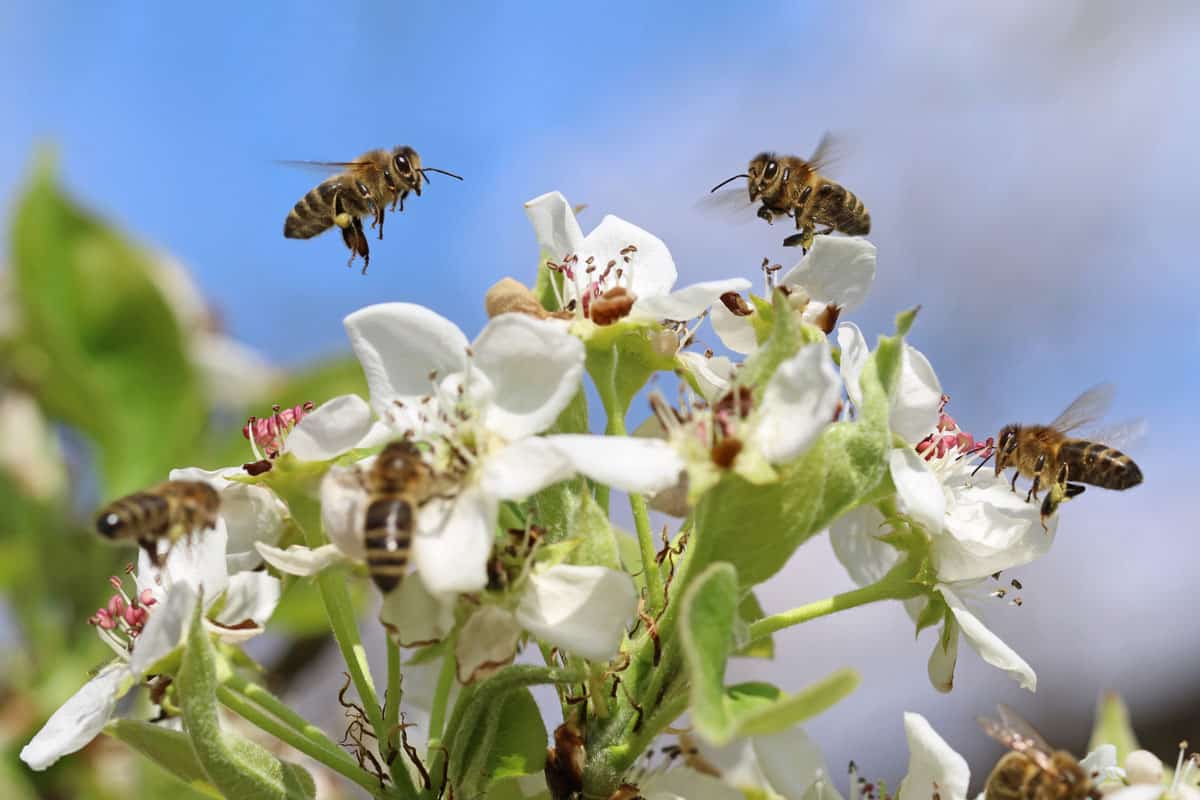
Fruit trees need to be pollinated to generate seeds that will grow fruit. Fruit formed from fertilized blooms is referred to as a fruit set. The fruit set requires pollination between two or more plants for most fruit trees.
They cannot be fertilized by pollen from blossoms of the same cultivar. Sometimes having a source of pollen is insufficient. A pollinator, or an agent that transfers pollen from one flower to another, is sometimes required.
When the trees bloom, pollination takes place. After pollination is complete, the tree is fertilized, and fruit develops.
It's crucial to remember that when it comes to fruit trees, some varieties of self-pollinating trees succeed more readily when cross-pollinated with another tree.
If there is cross-pollination, seeds will be genetically distinct from the parent plants. These seeds may be purposefully produced as part of a selective breeding program for fruit trees with desired characteristics.
Watch the petals of the blossom fall from your fruit trees because a crop is approaching. Make sure the chosen cultivars are pollen-compatible and have the same bloom time to ensure cross-pollination.
The sexual union of male and female components occurs during fertilization. If you've ever observed how they hover above flowers to collect nectar, you may have noticed the sticky yellow pollen adhering to honey bees' legs.
The honeybee, which collects nectar from the blooms while also transferring pollen between them, is the most frequent pollinator of fruit trees. A single honeybee may visit up to 5,000 flowers in a single day.
The stigma must be exposed to pollen from the plant's male component to the female part of the plant, which is its anthers.
Once the pollen is delivered from the male stamen to the female pistil following pollination, it begins to germinate. As a result, the seed gets fertilized and grows.
The anthers, the male floral components mounted on long filaments, are responsible for producing pollen. The anthers and filaments collectively are referred to as stamens. A floral tube called a "pistil" attached to the ovule, or unfertilized seed, is where the pollen grain descends.
You must safeguard your bees and other pollinators because there won't be any fruit without them. Never use insecticides when pollinators are around or on fruit trees that are in bloom. When it's feasible, reduce pesticide use.
Some fruit trees are self-fruitful or self-pollinating. Fruit trees that self-pollinate don't require a nearby neighboring tree to complete the pollination process. Fruit trees in this category include cherry trees and peach trees.
Click here to see these dwarf bonanza peach seeds on Amazon.
What Happens If There Is No Pollination?
Your lovely fruit trees won't yield a variety of delectable foods without pollination. Flowers may grow but not the fruit.
Some fruit crops are self-fruitful, which means the fruit can be fertilized and grown using pollen from the same variety.
Trees with blooms that only self-pollinate do not produce as much fruit as trees with flowers that are cross-pollinated or pollinated by insect pollination.
All self-fruitful plants include gooseberry, currant, strawberry, raspberry, and blackberry.
Click here to see these strawberry seeds on Amazon.
What Fruit Trees Don't Need Pollinators?
Many of the fruit tree varieties from Europe and Japan produce fruit on their own. Whether a fruit tree produces fruit on its own depends on the natural shape of the blooms. Fruit trees that produce fruit on their own do not require the pollination of another type.
When a single variety is planted, they produce fruit. Some plants, like citrus trees, have "perfect flowers" that have both male and female portions that produce pollen.
For the best fruit set, cross-pollination is not necessary for most peaches and nectarines, strawberries, apricots, pears, citrus, currant, figs, and some apples.
These fruit trees are self-fertile, meaning that pollen from the same tree or another tree of the same variety should result in fruit production.
Click here to see these yellow pear seeds on Amazon.
Consider some of these self-pollinating fruiting trees and shrubs if you want to develop a mini-orchard in your backyard. While some grow well in temperate conditions, some are best planted in warmer climes.
Can You Put Epsom Salt Around Fruit Trees?
Epsom salt is applied to fruit trees or plants to encourage them to produce bigger. Your fruits and veggies will taste better and be sweeter if you add Epsom salt to the soil.
It also increases a plant's green hue and helps flowers bloom more effectively. By bolstering the stem and roots of the fruit trees, Epsom salt aids in the absorption of these nutrients. The Epsom salt will increase your fruit and nut trees' chlorophyll levels.
More incredible energy comes from chlorophyll, and sweeter fruit results from more energy. Epsom salt consists of hydrated magnesium sulfate, essential for healthy plant growth. Thus, your fruit tree can benefit from this mineral in terms of development.
For every 500 feet of soil, apply 1/2 cup Epsom salt with water. Every time you irrigate the area around your fruit trees, they advise applying the mixture. Fruit shrubs and nut trees do pretty well with it.
Click here to see these Epsom salt on Amazon.
In Closing
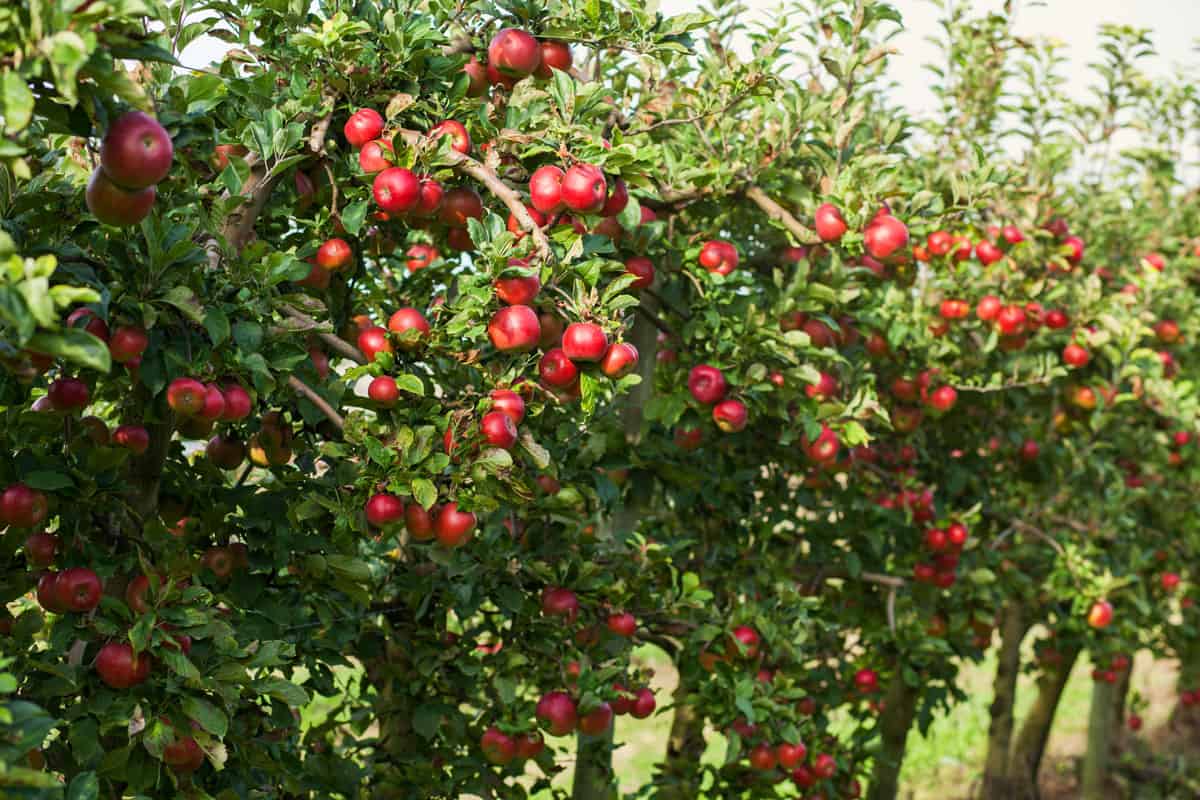
If you just have room for one fruit tree, choose a cross-pollinating, self-fruitful variety. When grown alone, some cultivars may be fully or partially self-fruitful; in other environments, they might not be. Please note that if another tree is closed, you will receive a larger yield.
Planning before you plant fruit trees in your yard will help you better understand the differences between the two very different processes. Utilize our simple advice to achieve the highest yields.
We hope you found this article inspiring. Before you leave, kindly check out these other related posts:
How Much Fertilizer Should You Use For Fruit Trees?
What Is The Difference Between Pollination And Fertilization?





